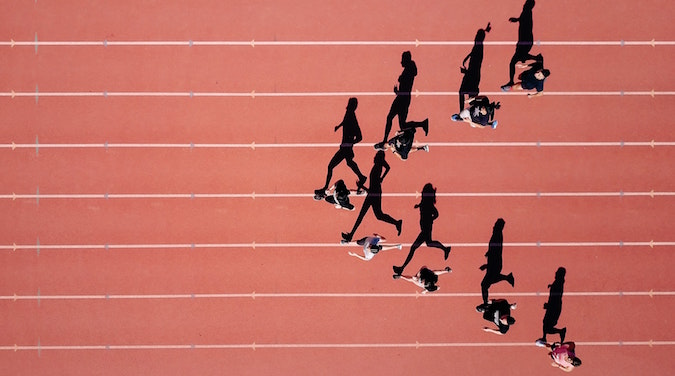Making marginal gains in marketing
Share

If there is one lesson that the marketing industry can learn from elite athletes during the Olympics, it’s the power of incremental gains. Lisa Khatri writes about how brands need to redesign listening programs to remain agile and get the gold.
I’ve recently been learning more about the hugely powerful physical and mental training strategies adopted by elite athletes to be the best in their respective fields. It all started with a mid-year sales kick-off and has continued due to the various global sporting events taking place this winter.
As I’ve dived deeper into the topic, it’s become clear there’s one critical lesson the marketing industry can learn from the approaches adopted by world-leading athletes. That is the power of marginal gains. The theory that continued incremental gains add up to deliver significant improvements over time. It’s simple but effective.
In some ways, elite sport and marketing are very similar. Both feature teams or individuals competing with one another to be the best in their field. Every competitor has its own unique strengths and weaknesses despite being equipped with the same basic competencies. And the playing field is constantly evolving, from new entrants joining through to changing external environments.
While there’s no denying that at the highest levels it can be the little things that count, turning this principle into reality hasn’t always been easy in business, especially when budgets are tight, results are expected immediately and the market is constantly changing.
However, as new technologies and capabilities become available, marketers and brand managers have an incredible opportunity to capitalise on the potential of marginal gains in our rapidly changing world. Importantly, these benefits can be achieved without disrupting existing relationships with customers or placing additional tasks on them.
Those looking to get a head start on the pack should look closely at the ways elite athletes apply this approach and replicate it within their own campaigns and programs:
Understanding the how and the why of performance
In the pursuit of glory, athletes generate a range of feedback for their teams to analyse. From anecdotal thoughts on how they are feeling, through to coaching advice and even metric-driven performance data, such as speed, power and endurance. By understanding the link between each piece of feedback, coaches and athletes are able to implement training strategies designed to maximise performance for when it matters most.
The same listening approach should be applied in marketing. Regularly undertaking consumer research helps organisations understand the needs of the market. By capturing behavioural data and integrating it with experience insights, such as top-down brand tracking initiatives through to tactical bottom of the funnel touchpoint feedback, marketers can quickly and easily identify how they are performing in the current environment and what they can do to improve.
Beiersdorf Australia (an international skincare company whose brands include NIVEA and Elastoplast) has been putting this approach to good use since the beginning of the COVID-19 pandemic. In an effort to understand how people were feeling and behaving, the company quickly deployed an ongoing consumer sentiment tracker. Insights are combined with Beiersdorf’s ongoing brand tracker, helping it continually optimise go-to-market strategies and its associated spending.
Finding new ways to compete
The last 18 months have thrown a number of challenges at athletes, from being separated from coaches and teammates due to restrictions to cancelled competitions and restricted training facilities. Despite these setbacks, the teams and individuals involved have continually found new ways to train, compete and stay motivated.
It’s been a similar story for the marketing industry. Events have been cancelled, the way people consume media has changed and consumer behaviours and expectations are considerably different to the beginning of 2020. While brands can’t control these external factors, they can take steps to understand the impact of disruption and what – if anything – can be done to ensure the organisation continues to perform.
A brand that has reaped the rewards of using insights to take a different approach during the pandemic is Volkswagen Group Australia. Faced with the prospect of closed showrooms, Volkswagen quickly took action to ask its customers a simple question: would you buy a car online? The answer was a resounding yes, with the company quickly accelerating its plans for an ecommerce offering. Six months later, Volkswagen had sold 460 cars online – a total sales value of more than $36 million.
Always be improving
Each time an athlete achieves a new personal best, they set themselves another small goal. It’s easy to forget that athletes don’t win gold overnight. It takes long days, years of training, and plenty of sacrifices to be the best.
The same goes for building a successful brand. Marketers must be constantly finding ways to move a brand forward, from launching into new regions or bringing to market new products, as well as ensuring their campaigns and communications resonate with consumers. With the right market insights, organisations can take confident action to increase their chance of success.
One of Australia’s fastest growing brands, Koala, is using regular insights to support and guide the company’s growing operations. Insights captured across a range of areas – including concept ideation and testing, pricing optimisation, and ad-campaign testing – inform Koala’s product, brand, and customer experience, as well as the company’s offshore growth plans to ensure the company moves forward with precision and purpose.
Unlocking the power of marginal gains
Understanding the how and why behind certain outcomes is fundamental to reaping the rewards of marginal gains in sport and business. To capitalise on this opportunity, brands need to redesign their listening programs to ensure they have the autonomy and agility required to operate at the speed and standard markets and consumers demand today. Those organisations that do will find themselves with a distinct advantage in increasingly competitive and changing business landscapes.
Lisa Khatri is the head of customer, brand and design experience, APAC, at Qualtrics.
Photo by Steven Lelham on Unsplash.















